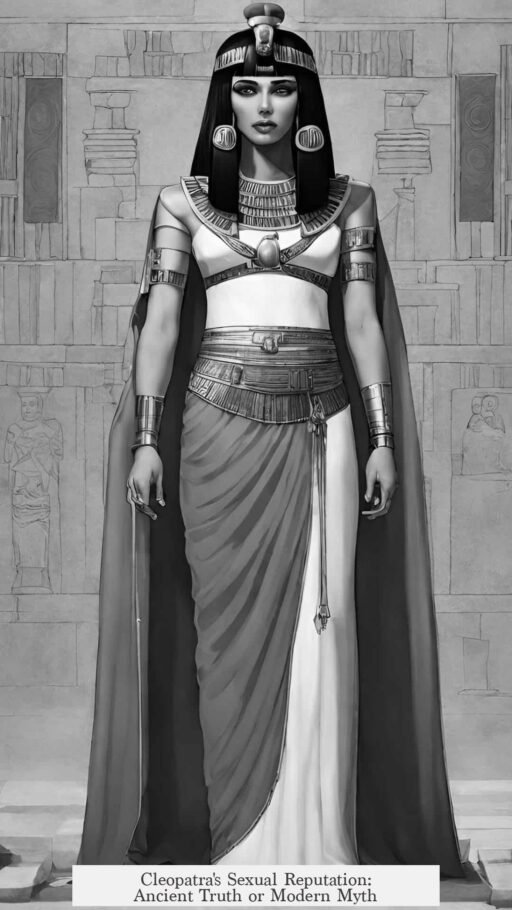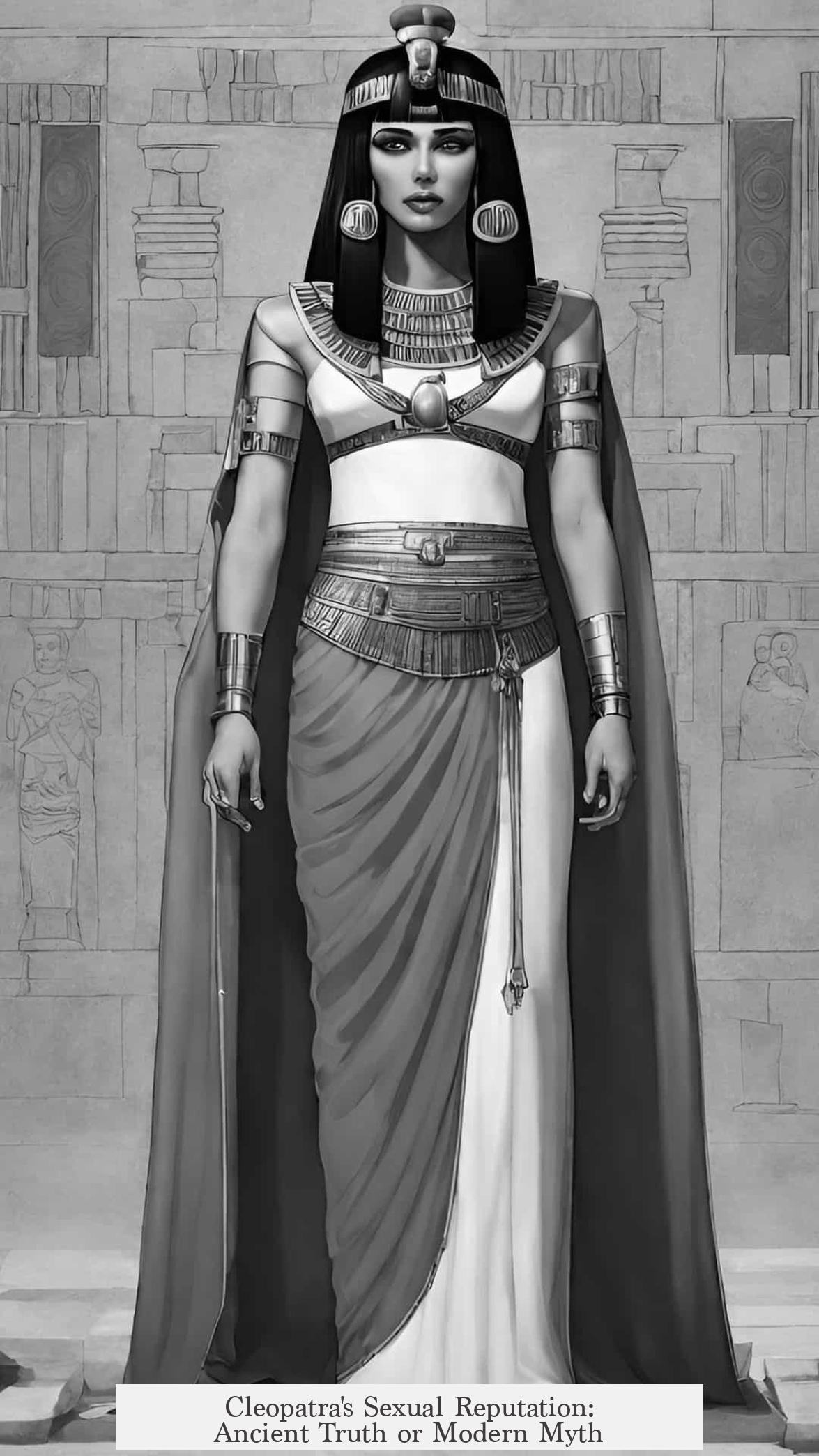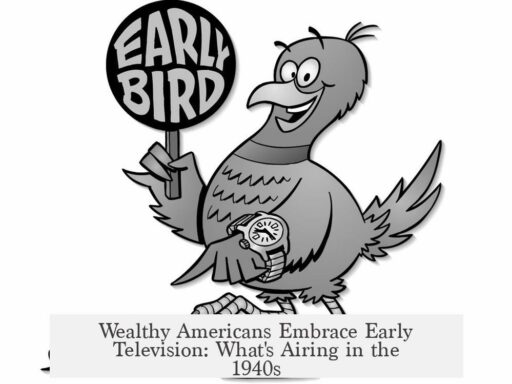Cleopatra’s reputation for sexual exploits largely stems from Roman propaganda and much later myth-making rather than reliable ancient accounts. Ancient sources focus more on her political power, intelligence, and lavish lifestyle than on explicit sexual behavior. The sensational stories of orgies, sexual devices, and extreme promiscuity have no basis in the earliest historical records but instead arose in Renaissance and modern times, often through fabricated documents and erotic fiction.
All surviving ancient biographical accounts of Cleopatra come from Roman authors. These writers, including historians and poets, portray her as a wealthy, charming, and politically ambitious queen. They emphasize her formidable influence over Julius Caesar and Mark Antony, her luxurious court, and her challenge to Roman norms, especially as a woman holding power. However, direct mention of sexual misconduct is rare and vague.
Much of Cleopatra’s sexual notoriety comes from Roman political propaganda, especially the Augustan faction led by Octavian (later Augustus). Roman elites felt threatened by Cleopatra’s foreign monarchy and Antony’s alliance with her. Propaganda framed Cleopatra as a manipulative foreign seductress who corrupted Antony and threatened Rome. Importantly, this propaganda avoids explicit sexual details. Instead, it focuses on portraying her as a dangerous woman who undermined Roman order and emasculated Antony.
Some Roman poets, such as Propertius and Horace, used veiled invective to malign Cleopatra, calling her a “whore queen” or describing her in derogatory terms. Yet these poetic insults serve more as political character assassination than as factual sexual accusations. Details about actual sexual activity are minimal or absent.
Medieval literature largely avoids sexual scandal. Figures like Geoffrey Chaucer depict Cleopatra as a tragic and virtuous queen. Specific sexual tropes, such as orgies or bizarre devices, do not appear in the Middle Ages.
The more lurid sexual stories emerge much later. Renaissance and early modern writers introduced extravagant tales, including the supposed invention of a vibrator using bees inside a hollow gourd, and stories of Cleopatra having sex with dozens of men in one night. These claims first appear in the late 16th century through forged “Soranian Letters” attributed falsely to Cleopatra and her contemporaries. These letters mix historical fiction with erotic fantasy. They borrow heavily from earlier scandalous accounts of other imperial women, such as Messalina or Theodora, rather than from genuine ancient sources.
In the 19th century, Cleopatra’s image became further eroticized through literature and art. Writers like Théophile Gautier portrayed her as a hedonistic queen seeking exotic pleasures and numerous lovers. These depictions contributed to the modern vanilla stereotype of Cleopatra as a hypersexual woman but reflected contemporary literary trends rather than historical reality.
Modern society continues to emphasize Cleopatra’s sexual image, attaching it often to misogynistic stereotypes. The more salacious claims owe more to cultural expectations and imagination than to what ancient texts say. Historical Cleopatra was a politically astute monarch rather than a figure defined by sexual scandal. The scant references to sexual matters in ancient works function mostly to serve political agendas, not to provide a biography of her personal life.
| Aspect | Ancient Accounts | Later Myths and Modern Interpretations |
|---|---|---|
| Source Type | Roman historical and poetic texts | Renaissance forgeries, erotic fiction, popular culture |
| Focus | Political power, wealth, charm | Sexual promiscuity, orgies, erotic inventions |
| Sexual Details | Vague invective, implied danger not explicit acts | Explicit sexual exploits, extreme promiscuity, orgies |
| Example Story | Clever political seduction of Antony | Sleeping with 106 men in a night (forged letters) |
| Cultural Context | Roman misogyny and political propaganda | Modern sensationalism and misogynistic stereotypes |
A careful historical view recognizes Cleopatra as a strong ruler who used all means, including her personal charm, to maintain power. The explicit sexual exploits attributed to her now lack credible ancient evidence and instead derive from later myth-making and cultural bias. These myths often overshadow her political achievements and reduce her to a one-dimensional figure defined by sexuality.
- Ancient authors focused on Cleopatra’s political role, wealth, and influence over Antony and Caesar.
- Roman propaganda implied sexual manipulation but did not detail explicit acts.
- Sensational sexual stories originated in late Renaissance forgeries and modern erotic fiction.
- Medieval and early modern literature largely avoided sexual scandal and portrayed her more sympathetically.
- Modern popular views exaggerate and invent sexual exploits, overshadowing historical reality.



